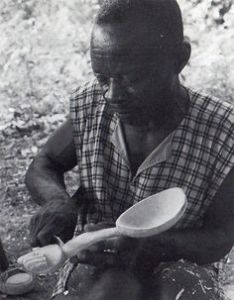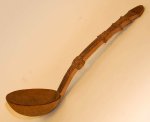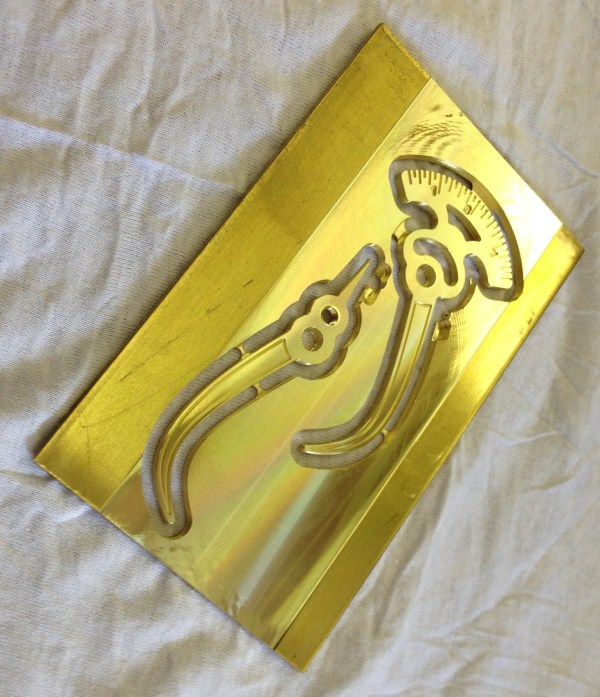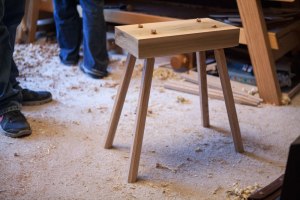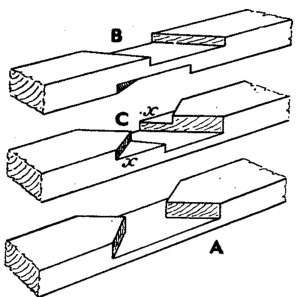Spoonful –
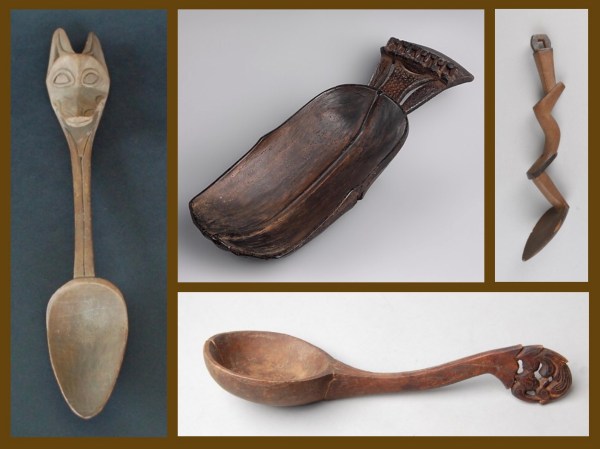
A constellation of carvers will soon be gathering in Plymouth, Massachusetts for Greenwood Fest 2018 so I thought a taste of non-European spoons, ladles and scoops (some ceremonial, some for daily use) might be in order.
Africa
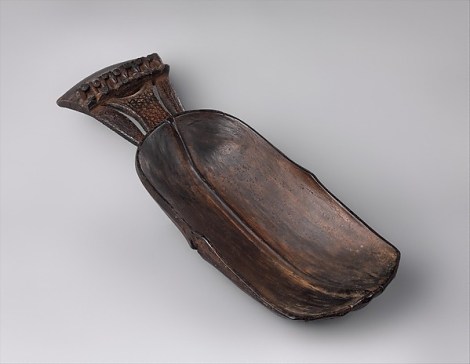
Let’s start big with the wakemia, or wunkirmian, of the Dan people of Liberia and Cote d’Ivoire. These ceremonial ladles, which can be up to two feet long, are carved for the woman with the greatest reputation for hospitality. Wakemia translates as “spoon associated with feasts” and the large bowl of the ladle is a representaion of the generosity of the honored woman. In this example the bowl is shaped into a large leaf and the crest-like handle is intricately carved.

The wakemia can be carved in many different forms. The handle end is often carved with a human or animal head. One remarkable form is the handle carved to represent human legs. The photo above shows the detail on two different spoons (both positioned on stands).

These two spoons are from Madagascar. The bowl shapes are different, but they share deceptively detailed handles.

Was the carver inspired by a lightning bolt? Was he following the zigs and zags of the piece of wood he chose to use?

It is not uncommon to see patterns, especially those with spiritual meaning, repeated in textiles, weavings and carvings. The spoon carver may have taken his inspiration come from one of the traditional patterns used in the woven baskets of the Lozi.
The shapes of plants and animals significant to the a culture’s religious beliefs and livelihood are often incorporated into items used in daily life.
Two very different spoons from Tanzania, with some similarity in the density of chip carving on the handles. Each spoon is likely from a different ethic group in Tanzania.
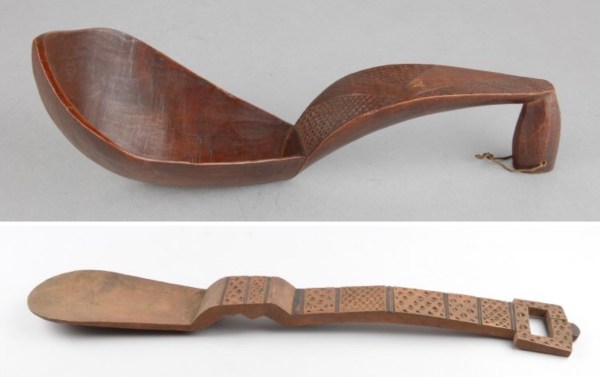
The top with its deep bowl and built-in spoon rest is the perfect serving spoon, while the porridge spoon on the bottom is more tour-de-force than spoon.
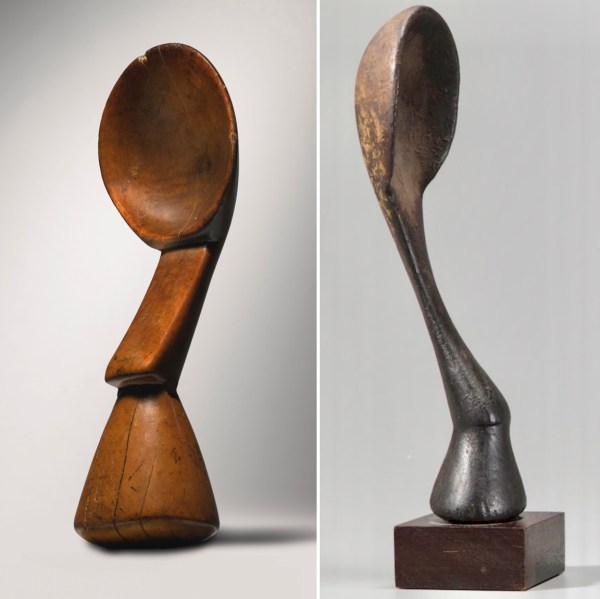
The innovative Kulango spoon from the Ivory Coast is a spoon on one end and pestle on the other. Although it is a utilitarian item it could easily be viewed as a sculpture. In fact, more than a few 20th century painters and sculptors were influenced by African art and everyday items.
Asia
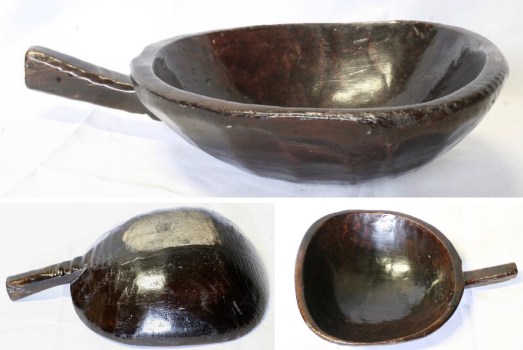
This old Korean scoop has seen a lot of use and has a turtle shape. It is one of those things that gets passed down from one generation to the next and no one remembers who made it or when.

The Toraja live in a mountainous area of the island of Sulawesi. Although the top example appears to be the more elegant of the two, both spoons have a similar overall shape with a blunt end, are curved (the bottom one less so) and have a split-tail handle. The curve of these spoons is similar to the swooping roofs of traditional Toraja homes.
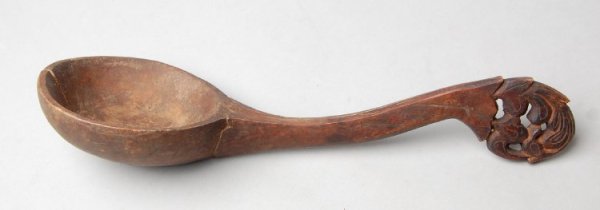

The generous bowl and beautifully carved handle make this one of those spoons that complements the act of cooking and serving food. The ethic origin of the spoon is not definitive but the carving has similarities to a Melanau badek (dagger) sheath (left) and the carved crest of a hornbill bird made by the Iban (right).
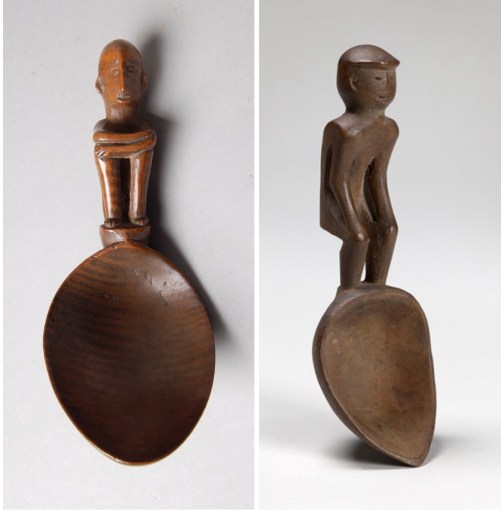
The Ifugao from the northern part of Luzon decorate spoons with images of deities, an ancestor or a prominent person of the community. Pork or duck fat was traditionally used to polish the spoons. The area is known for its rice terraces and these spoons were used for serving rice and soups.
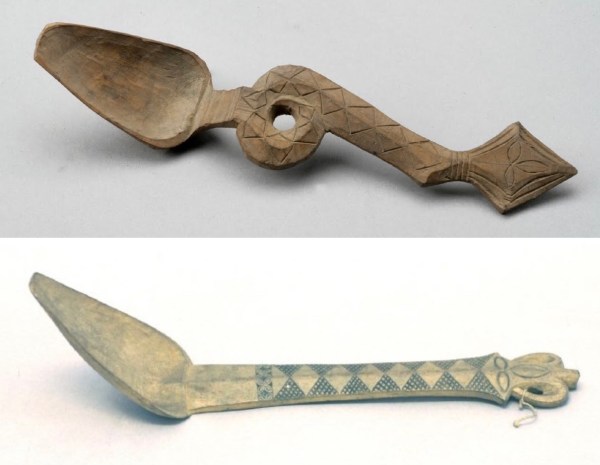
The spoon at the top is from the Paiwan. Many of their carvings are of snakes and this spoon captures the coil and scale pattern of a snake. The spoon on the bottom is from the Rukai. The Rukai often used boxwood, the bowl shape is leaf-like and the handle has geometric carving.

The Ainu are an indigenous people of northern Japan. One line of “spoon evolution” goes something like: cupped hand, shell, shell with handle, carved spoon. Here you go, shell with handle.

If you look closely, there is carving on the handle of this Ainu ladle. In the gallery are two more Ainu spoons with some nice carving.

Some spoon forms rarely change. The painting at the top is by Takeuchi Seiho (1864-1942). The bowl, jointed bamboo tea spoon and whisk are from an Edo era (18th century) traveler’s tea set.

I have two of these rice spoons or scoops (regular size) made of bamboo and use them all the time, not just for rice. Next trip to Japan I am going to Miyajima to see this giant rice spoon made of zelkova wood. It is 7.7 meters long, 2.7 meters wide and weighs 2.5 metric tons (25’3” x 8’10” and 5512 lb). If there is a giant ball of string nearby I’m going there, too.
Rukai indigenous group, Taiwan. Minza University.
The “New” World

The Wari pre-dated the Inca (early Wari culture is dated around 1200 B.C) and had a rich craft tradition of carving, ceramics, weaving and stonework. As you can see below, they made an awesome hat-no way I would leave that out.

Like many cultures there is a repetition of design that gives a unity to their work.

Whether the spoon handle is topped with a bird (top) or a human the design is part of a cohesive whole. There is uniformity but no dullness in the repeated forms.
Now that we have verified there was spoon carving in the New World well before any Europeans arrived, let’s head to the far north.

The Tlingit are known for carving animal forms and totems. The top left spoon incorporates a painted raven into the handle, while the spoon on the right has a totem. These two pieces were likely reserved for feasts or ceremonial use. On the bottom is a spoon that probably saw use every day.

I found many Northwest Coast spoons and ladles in British museums. One curator (I forget which museum) remarked there was a collection frenzy in the late 19th and early 20th centuries because of fears some of the Northwest Coast peoples would go extinct. Identification of cultures was not always exact or correct.
In the four spoons above there is a wonderfully rendered wolf, a halibut and an “every day” spoon. The long-handled spoon has a pleasing carving of a plant.

The top left ladle is Powawatomi with a bear effigy and the top, the top right spoon is Chippewa with either an owl or a feline effigy ( I vote for feline). On the bottom is another Chippewa spoon (or ladle). It is a bit chipped, but who cares? Those curves above the bowl are lovely.

Three feast ladles. On the left is a ladle with a bird effigy and speckles from the Iowa people was collected in Oklahoma; top right is an Osage piece, also collected in Oklahoma. On the bottom right is a Fox ladle with a horse effigy collected in Iowa.

The top spoon is Wampanoag from Fall River, Massachusetts; the bottom piece is Mohegan from near Norwich, Connecticut.

Both ladles are Seneca from New York. The spoon at the top has a bird effigy, as do many North American spoons, and here you can see a close-up. Without intricate detail the bird is captured perfectly. The spoon handle on the bottom is a bit unusual, with the lower leg of a human and a hook added for hanging.

The wide bowl of the ladles, especially from the East Coast, are known as clam shell bowls. If we go back to “spoon evolution” there are many shells in museum collections labeled as “spoons” or “shell spoons.” The mighty quahog clams of the Atlantic coast were a perfect implement for use as a spoon or a small shovel. The Seneca ladle above is included to show you both its heft and the six-inch wide bowl.

This masterpiece is from the Yankton Sioux in South Dakota. Glass beads were used for the eyes of the bird.
Back to the “Old” Old World

And we are back to hands and clam shells. There are several variations on the Egyptian “clam spoon” from a dog handle to a woman swimming handle to these two hand-handles. Note the top spoon has the index finger supporting the bowl from below, while the spoon on the bottom has the thumb above and the rest of the fingers under the bowl.


Sometimes, the hand is the spoon!
In hieroglyphics the hand translates as the letter ‘D’ or, depending on context, “by the hand of.” For the Toraja people of Sulawesi the word for woodcarving is Pa’ssura which translates to “as writing.” Wood carvers, ancient and modern, are using their hands to write their culture, whether it be spiritual, artistic, or both. Carving a spoon is your writing.
To wrap this up: “Spoonful” as Willie Dixon wrote it and Howlin’ Wolf sang it:

It’s just not the same with a fork.
–Suzanne Ellison
